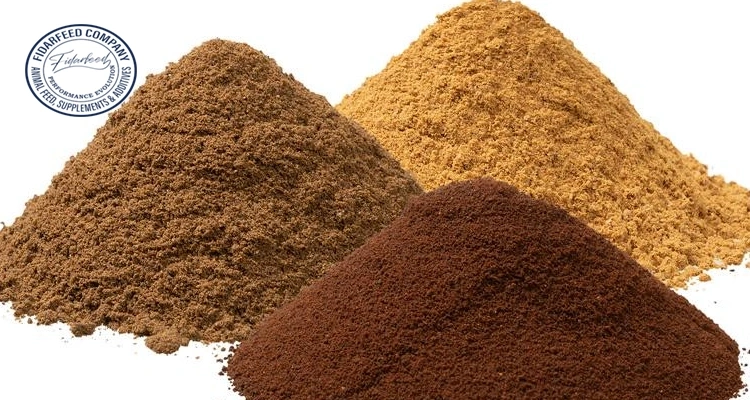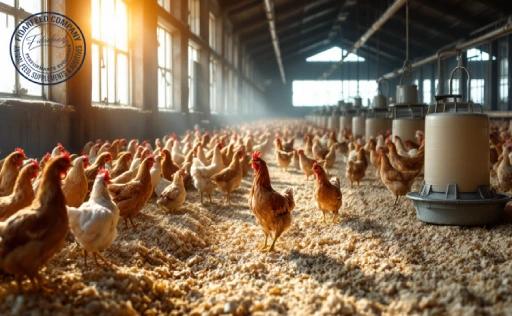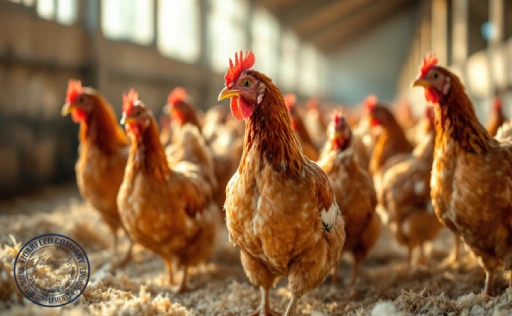Introduction: The Rising Role of Animal-Based Protein in Poultry Diets
Processed Meat Meal in animal feed is gaining significant attention among poultry breeders and feed formulators worldwide. As poultry production scales up to meet global demand, the quest for optimal protein sources that support rapid growth, health, and feed efficiency becomes critical. Processed meat meal has emerged as a powerful ingredient, reshaping poultry nutrition by offering a concentrated, high-quality protein alternative. Whether you’re a seasoned breeder or just starting, understanding the value and application of processed meat meal can help you optimize your flock’s diet and boost productivity. Let’s dive into why this ingredient matters and how it can transform your poultry feeding strategy.

What Is Processed Meat Meal and How Is It Made?
Processed meat meal refers to the protein-rich product obtained by rendering and processing animal by-products such as meat scraps, bones, offal, and other parts unfit for direct human consumption. Through a controlled cooking and drying process, these raw materials are transformed into a concentrated meal that preserves vital nutrients, especially proteins and minerals.
Learn more about: Processed Meat Meal
This meal differs significantly from raw meat or simple meat scraps because processing removes excess moisture and pathogens, making it a safe and durable feed ingredient. Types of processed meat meal may vary based on the source animals (poultry, cattle, pigs) and the rendering process, but all aim to deliver consistent nutritional quality.
Protein Power: Nutritional Advantages of Processed Meat Meal for Poultry
One of the biggest selling points of processed meat meal in animal feed is its remarkable protein content. Typically containing 55-65% crude protein, it provides poultry with essential amino acids necessary for muscle development, feather growth, and overall vitality.
Learn more about: Meat Meal in Animal Feed: What It Is, How It’s Made, and Why It Matters
Unlike many plant-based proteins, processed meat meal offers a well-balanced amino acid profile, rich in lysine, methionine, and cysteine—amino acids often limiting in cereal-based diets. This balance supports faster growth rates and improved feed conversion ratios (FCR). Additionally, the presence of minerals such as calcium and phosphorus contributes to bone strength and eggshell quality.
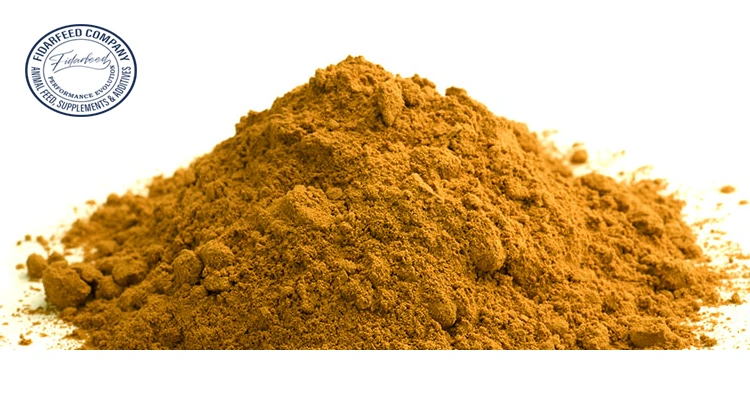
Impact on Growth: How Processed Meat Meal Enhances Poultry Performance
Scientific research consistently shows that including processed meat meal in poultry diets leads to superior growth performance. For example, a study published in the Journal of Animal Science found that broilers fed diets with 5-10% processed meat meal had significantly better weight gain and FCR compared to those on soybean meal-based diets alone.
Learn more about: Boost Your Poultry’s Growth with Sustainable, High-Quality Processed Meat Meal
This is partly because processed meat meal is highly digestible, allowing birds to efficiently absorb nutrients and convert feed into muscle mass. Moreover, its rich protein content supports immune system development, helping birds resist common diseases and stressors that could otherwise slow growth.
Processed Meat Meal vs. Plant-Based Protein Sources: A Comparative Look
Soybean meal is the most common protein source in poultry feed, but processed meat meal presents a compelling alternative or complement. While soybean meal offers around 44-48% protein, it may contain anti-nutritional factors like trypsin inhibitors that reduce digestibility.
Processed meat meal lacks these inhibitors and typically provides more bioavailable nutrients, making it easier for young chicks to utilize. However, soybean meal is often less expensive and more widely available, leading breeders to weigh cost versus nutritional value carefully.
Learn more about: Meat and Bone Meal for Poultry: Affordable Alternative to Soybean Meal
In practice, many successful feeding programs combine both ingredients, balancing amino acids and improving feed efficiency.

How to Safely Include Processed Meat Meal in Poultry Diets
Incorporating processed meat meal into poultry rations requires attention to formulation and feeding stages. Experts generally recommend starting with a 5% inclusion rate for broiler starters and increasing up to 10-15% for grower and finisher phases, depending on bird age and dietary goals.
Learn more about: Everything You Need to Know About Wholesale Feed Additives
It’s essential to balance processed meat meal with cereals, vitamins, and minerals to avoid nutrient imbalances. Additionally, sourcing high-quality, certified meals from reputable suppliers ensures safety and consistency, protecting flocks from contaminants or pathogens.
Ensuring Quality and Safety in Processed Meat Meal Supply
Quality assurance is paramount when using processed meat meal. Industry standards, such as HACCP (Hazard Analysis and Critical Control Points), regulate production to minimize risks of disease transmission and contamination.
Choosing suppliers with transparent sourcing, regular lab testing, and adherence to feed safety regulations safeguards your flock’s health. Keep in mind that improper storage or poor handling can degrade nutritional quality and introduce health hazards.
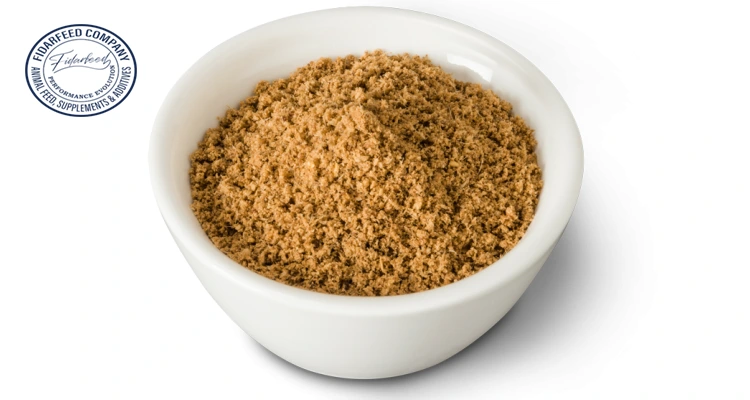
Economic Value: Is Processed Meat Meal a Cost-Effective Option for Breeders?
At first glance, processed meat meal may appear pricier than plant-based alternatives. However, its superior protein density and digestibility often mean birds need less feed to achieve target weights, improving overall feed efficiency.
Learn more about: Your Essential Checklist When Selecting Bulk Animal Feed Suppliers
For example, breeders integrating processed meat meal have reported up to a 5% reduction in feed costs per kilogram of weight gain due to enhanced growth rates. When factoring in improved bird health and reduced mortality, the economic benefits can be substantial.
Environmental Benefits of Using Processed Meat Meal in Animal Feed
Beyond nutrition and economics, processed meat meal contributes to sustainable poultry farming. By recycling animal by-products that would otherwise become waste, this practice supports circular economy principles.
Learn more about: Smart Shopping: The Probiotic Online Buyer’s Guide for Animal Feed Supplements
Using processed meat meal reduces landfill burden and lowers the environmental footprint of poultry production. It’s a responsible choice that aligns with growing consumer demand for sustainable and ethical farming practices.

Common Concerns Addressed: Myths vs. Facts about Processed Meat Meal
Despite its benefits, some breeders worry about processed meat meal’s safety, digestibility, and bird acceptance. Let’s address these myths:
-
Myth: It causes disease in birds.
Fact: Properly processed and sourced meat meal is safe and free from pathogens. -
Myth: Poultry dislikes the taste.
Fact: Most birds readily consume diets containing meat meal when balanced properly. -
Myth: It’s hard to digest.
Fact: Processed meat meal is highly digestible and often superior to many plant proteins.
Learn more about: Finding a Trusted Animal Feed Supplier: Your Ultimate Guide
Understanding facts over fears helps breeders make informed decisions.

Final Thoughts: Smarter Nutrition with Balanced Protein Sources
In conclusion, processed meat meal in animal feed stands out as a nutrient-dense, efficient, and sustainable protein source for poultry diets. By understanding its benefits, safe inclusion practices, and economic value, breeders can unlock superior growth and health outcomes in their flocks.
We invite you to share your experiences, ask questions, or discuss how processed meat meal has impacted your poultry operation. Together, we can foster smarter, more sustainable nutrition strategies that benefit breeders, birds, and the environment alike.

